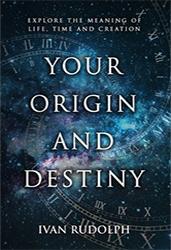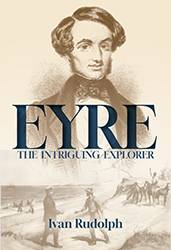Indigenous Women 1840s
In Eyre’s Manners and Customs 1845 he noticed that child marriage in Aboriginal culture and the promising of young girls to old men helped to keep women subservient:
The females, especially the young ones, are kept principally among the old men, who barter away their daughters, sisters, or nieces, in exchange for wives for themselves or their sons…. Female children are betrothed usually from early infancy, and such arrangements are usually adhered to.
He was saddened at finding how seldom there were bonds of love between husbands and wives.
But little real affection consequently exists between husbands and wives, and young men value a wife principally for her services as a slave. In fact, when asked why they are anxious to obtain wives, their usual reply is that they may get wood, water, and food for them, and carry whatever property they possess.
In 1842 the wife of a native in Adelaide, a girl about eighteen, was confined and recovered slowly. Before she was well, the tribe removed from the locality and the husband preferred accompanying them. He left his wife to die instead of remaining to attend upon her and administer to her wants. When the natives were gone, the girl was removed to the mission station, to receive medical attendance, but eventually died….
When wives are from thirty-five to forty years of age, they are frequently cast off by the husbands, or are given to the younger men in exchange for their sisters or near relatives, if such are at their disposal.
Eyre fingered powerful cultural practices as enforcing a degrading lifestyle upon women.
“Customs regulate all things: the acquisition and disposal of wives, the treatment of women…. the fear of sorcery or witchcraft if they transgress the orders of the elders or break through the ordinances that have been imposed upon them, and many other similar influences.”
However, he by no means saw only negatives for Aboriginal women. Eyre was the first to record in any detail the vital input of women to Aboriginal culture and everyday living. Very few followed his example for many years, for some unknown reason. Perhaps Eyre was different in that he spent much time in the company of indigenous people who were living their bush lives.
Eyre commended their good humour and kindness. He noted a great deal of camaraderie between the women and liked the fun games they played with their children. He admired their skilful tattooing of young girls as part of the initiation into womanhood. Their facile fingers and intelligence also enabled them to make items required by the family, including clothes, striped baskets, mats and dilly bags. They gathered fruits and vegetable produce, occasionally helped in the hunt by driving game or fowl into traps, and captured a great variety of fish and fowl that were cooked each in its own specialised fashion.
They also played a significant role in tribal dances and the ceremonies performed when encountering another group.
Furthermore, on meeting other tribes, “females engage in a narration of family occurrences, such as births of children, marriages, deaths, etc., not omitting a sprinkling of gossip and scandal, from which even these ebony sisters of a fairer race are not altogether exempt.” As in most cultures of the world, the women became the keepers of the family traditions.
Eyre hoped for meaningful debate to develop between Aborigines and colonials, but foresaw problems with finding representative indigenous leaders. There were no kings and queens of Aboriginal tribes.
Another difficulty Eyre recognised was that Aborigines were not a unified grouping but instead a plethora of different tribes, languages and beliefs. Could representative leadership emerge that would be accepted by all indigenous people as speaking for them?
He had watched tribal debates where there was complete freedom for any man to stand and speak his mind, or even to harangue the tribe until exhausted. At the end of the discussions, each man decided for himself what path to pursue and commanded his household to follow him. This rugged male individualism had advantages but not when it came to undertaking community action for the common good. And even today it can be difficult to find a community consensus that all male Aborigines will respect and keep.
Women were not traditionally tribal leaders, but older women were held in higher regard within the cultural structure, which provided them with a platform for future leadership. Because the community approach of women accords more readily with modern leadership than male independence does, many fine women elders and leaders have arisen in more recent years.
Male individualism also generates difficulties when men are required to live under a system of law.



